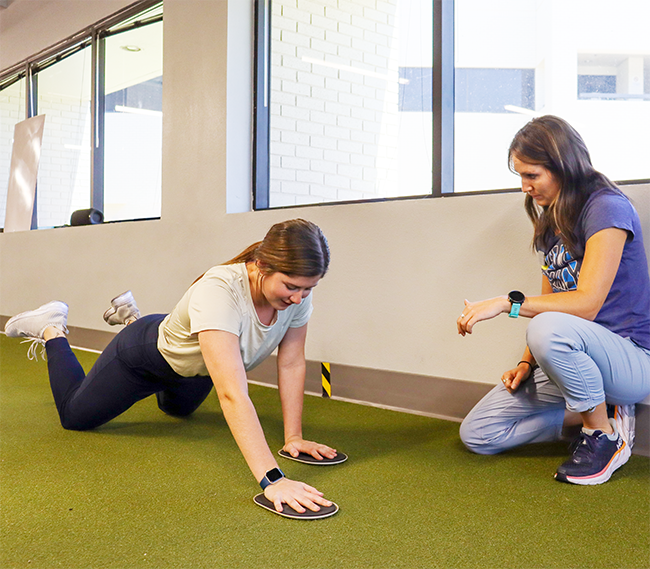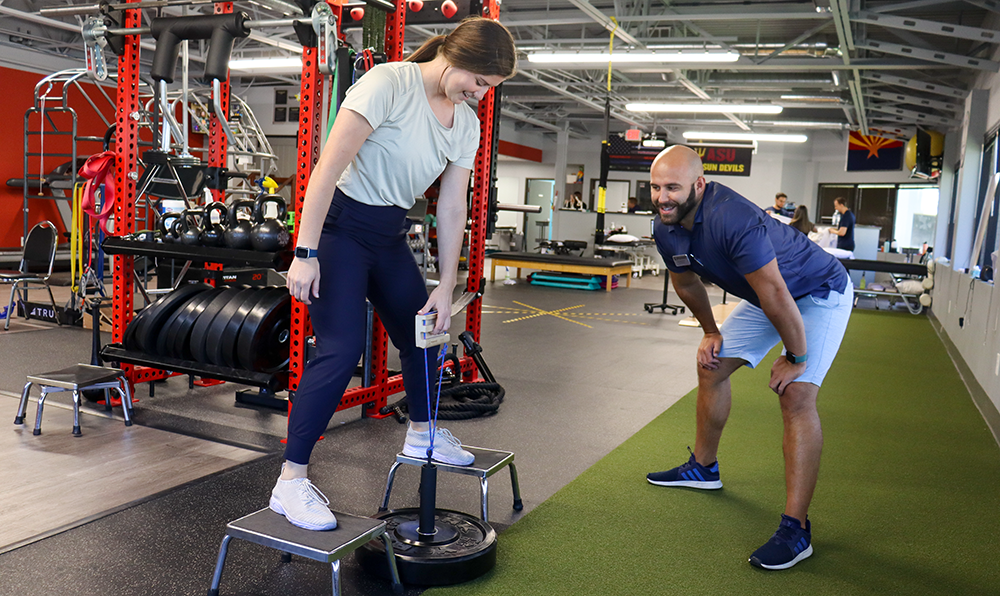By: Sam Gesicki, PT, DPT, and Carly Szemerey, PT, DPT
Every discipline of climbing requires strength.
Bouldering presents almost gymnastic difficulty depending on the setter of the problem. Balance, power, and athleticism is required for every moment on the wall. Sport climbing presents the longest time on the wall, so endurance is paramount. There is typically a bouldering section, or boulder problem, within a sport climb for added difficulty. In speed climbing, the route is always the same, and the climber goes for time. There is a significant amount of power generated in that short amount of time on the wall.
A strength routine for mobility, stability, and control is vital to improving a climber’s performance on and off the wall. Strength training can maximize your potential on the wall. Adding stability through strength helps minimize the risk of injury while climbing. Three areas for climbers to work on strengthening are the shoulders, the legs, and the core.
 Shoulder, Legs, Core, and Fingers: Strength for Climbers
Shoulder, Legs, Core, and Fingers: Strength for Climbers
The shoulders and the hips are likely to be quite mobile for the climber, so adding in eccentric movement to gain muscle and control is extremely beneficial. For the shoulders, scapular pulls and any overhead exercise will help stabilize this area.
For the legs, it is crucial to have proper hip mobility in all planes to support the body and reduce stress on the upper extremities. Strengthening the hips in internal and external rotation is paramount to properly hold yourself on the wall while you plan out your next moves or take a quick rest break. Hip flexion is also important to increase vertical gain on the wall without over-taxing your shoulders and grip. When you are climbing it is important to think feet, feet, feet, and not just rely on pull-up strength. Isometric hamstring strength is critical for maintaining tension while projecting overhang routes.
Core strength will also contribute to the control you have on overhangs and the balance you have on slab. Plank variations, such as the Copenhagen plank, side planks, regular plank, and the hamstring plank, all contribute to strengthening your core in all three planes of motion.
Finally, there are many ways to utilize the hang board to gain strength. Isometric holding with different grip sizes helps train your fingers and also maximizes scapular stability. With isometric holding, the goal is to continually increase your maximum hang time. A similar thing can be said about max hangs and pulls. While these weighted exercises need to be performed while you are already fully warmed up, going for an absolute maximum time rather than a certain amount of reps helps build muscle endurance the best.
If you are struggling to gain strength as a climber, we are here to help! Schedule an appointment today to help you stay on the wall.

